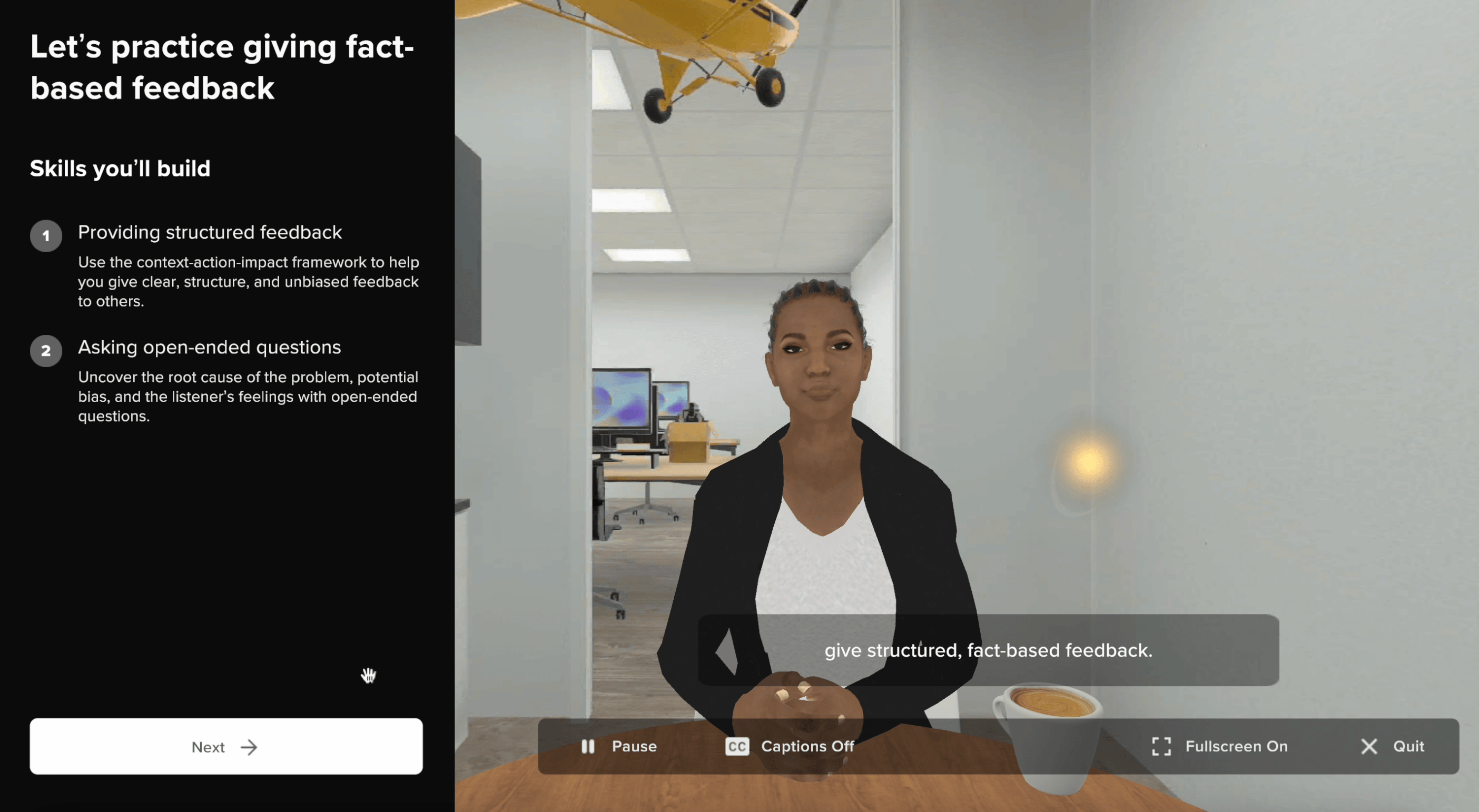- DEIJ, Talent Development
Want to Retain Diverse Talent? Launch a Mentorship Program
First there was “The Great Resignation.” Now, “quiet quitting” is the new big threat facing companies nationwide. The common thread across these phenomena is that many employees are just not satisfied.
Recent data paints a picture for why employees are seeking greener pastures. According to a survey by McKinsey, the most popular reason why people quit their jobs in the last 18 months was due to a lack of career development and advancement. Other popular responses included uncaring leaders, a non-inclusive or unwelcoming community, and lack of support for health and well-being.
The call for business leaders has never been clearer: people success is business success. When employees feel they can bring their authentic selves to work, and that they will have opportunities to grow and advance, they’ll bring their best ideas that drive your business forward.
How can companies keep their employees engaged and happy while developing their talent and helping them grow? More importantly, once organizations have gotten diverse talent in the door, how can they create a culture of inclusion that drives belonging and opens opportunities for career advancement?
One way forward is to develop a strong mentorship program, particularly one that centers employees from underrepresented groups and works in tandem with other Diversity, Equity, Inclusion and Justice (DEIJ) efforts.
How a Robust Mentorship Program Helps Employees and Your Businesses
Generally speaking, a robust mentorship program provides opportunities for skill development and networking that can unlock career advancement. The many benefits of mentoring and the effectiveness of mentorship programs have been studied and supported by scientific studies, and fall into three main buckets:
- Mentoring helps employees feel more valued by their employers;
- Mentoring builds supportive networks with coworkers;
- Mentoring develops critical skills that help advance their careers.
Employees who feel valued and empowered at work tend to stick around. An Association for Talent Development study saw employee engagement and retention increase by 50% when companies offer mentorship programs. This research fortifies other studies that cite mentoring as absolutely critical to retention, engagement, and a healthy talent ecosystem.
The Connection Between Mentorship and DEIJ
While a mentorship program is useful for all of an organization’s employees, the benefits increase exponentially for members of underrepresented groups. When polled, women and people of color are more likely than others to report mentoring as very important to their career development.
For Black employees, this likely stems from them being significantly less likely than their white counterparts to report seeing leaders who look like them in their organization. In turn, when Black employees see leaders of their own race, a Gallup study found that they have 12 times more trust in their organization.
Not only should employees of underrepresented groups simply see leaders that look like them, companies should take the proactive step of creating formal mentorship programs that connect these leaders with more junior staff from similar backgrounds.
Though it may seem simple compared to other DEIJ initiatives, the impact of mentorship cannot be understated. A 2016 study in the American Sociological Review found that mentoring, in comparison to other tactics (such as diversity trainings, grievance systems or job tests), increased minority representation among managers in the workplace anywhere from nine to 24 percent. Some of the largest increases in leadership positions were among Black, Hispanic and Asian women, respectively.
What a Mentorship Program Looks Like in a Remote or Hybrid Environment
Now that we can agree that mentorship is highly important for employee retention, what does it actually look like in practice? After all, mentorship can look like anything from informal coffee meetings with a senior colleague to a formal program with metrics and goal-setting.
The post-pandemic landscape further complicates matters, as some activities traditionally thought of as mentoring are less feasible or effective in a remote or hybrid work environment. And the need for connection when working remotely can be even greater with many employees feeling less engaged or burnt out since the start of the pandemic.
For large, globally-distributed companies, a remote environment can actually be an asset to mentorship. Mentees can form relationships with leaders in other parts of the country and even world. Mentors can be chosen for reasons other than geographic proximity, which can make connections more meaningful.
The following four forms of mentorship can be effective in any type of workplace environment, whether in-person, remote, or hybrid:
1. Career Mentoring
This is the traditional type of one-on-one career development that many think of when they think of mentorship. Career mentorship can illuminate employees’ paths to advancement by identifying opportunities for stretch assignments, promotion, and increased pay.
2. Reverse Mentoring
Just as it sounds, this type of mentoring refers to senior leaders being the mentees and more junior employees acting as mentors. When applying a DEIJ lens to reverse mentoring, junior employees from diverse backgrounds have the opportunity to mentor senior executives. This empowers junior employees with an opportunity to influence business decisions and can help the more senior professional learn about new perspectives, technologies, and trends.
3. Buddy Program
Here, a new hire is paired with someone who’s been at the company for a while to informally share knowledge. The key is that this starts early on, and on a regular basis. This can help build a sense of belonging, especially those from underrepresented groups, cultivate other workplace relationships, and foster connection to the company’s culture.
4. Peer to Peer
This type of mentorship enables employees to find coworkers with different backgrounds and share experiences as a group. This type of networking increases understanding across an organization. Often, this looks like joining employee resource groups (ERGs) that connect people based on shared identities, such as women or members of the LGBTQ+ community. These have proven to be highly effective for networking, creating community, removing barriers, confronting bias, and building more empathetic relationships in the workplace. Especially when supported by executive sponsors and funding, ERGs can be a powerful tool for culture-building, career advancement, and accountability.
In all four of these types of mentorship, employees are able to bypass the traditional hierarchical chains of command, creating more organizational trust and empowering those who may otherwise feel alienated or unengaged.
Don’t Overlook the Value of Mentorship
While they can be a bit of work to get off the ground, mentorship programs are hugely important in helping a company build a culture that supports diversity and inclusion initiatives. It is no wonder that the vast majority of Fortune 500 companies have formal mentorship programs, and that the vast majority of younger workers see mentoring as crucial to their career success.
With the right planning and training, mentoring can save your company high turnover costs, develop employees’ leadership and management skills, and ultimately create more trust and connection within your organization.









